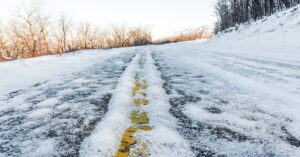With nearly half a million residents and a steady population growth going back decades, Colorado Springs is home to some of the busiest roadways and intersections in the state. As your Colorado Springs car accident attorney, Cheney Galluzzi & Howard, is using traffic data from previous years and reviewing news releases about relevant traffic projects, we can come up with an accurate estimate of which intersections and roads are likely to be most dangerous for Colorado Springs drivers in 2024.
We hope this information will help to keep you and your family safe as you travel around the beautiful, vibrant city of Colorado Springs. If you have been involved in an accident at one of these or other intersections, contact our office as soon as possible. We can help you pursue compensation for your injuries.
The Most Dangerous Intersections in Colorado Springs, CO
Recent data about Colorado Springs\’ most dangerous intersections is available thanks to local radio station KRDO and the Colorado Springs Police Department (CSPD). In 2020, overall accident numbers were reduced by over a third while traffic fatalities reached record heights, with 51 lives lost to car crashes.
In an effort to make sense of these numbers, KRDO requested crash data from CSPD, including information about the most dangerous intersections in Colorado Springs, so that they could put out an informative report for the public, which they did in early 2021. Per that reporting, the top 15 most dangerous intersections in Colorado Springs in 2020 were:
- I-25 and S. Nevada Ave./S. Tejon St. – There were 68 total crashes in 2020, including 9 accidents resulting in injuries and 1 fatal accident.
- I-25 and W. Garden of the Gods Rd. – There were 59 total crashes in 2020, including 7 accidents resulting in injuries and 1 fatal accident.
- I-25 and Lake Ave./S. Circle Dr. – There were 54 total crashes in 2020, including 7 accidents resulting in injuries and 1 fatal accident.
- I-25 and W. Fillmore St. – There were 52 total crashes in 2020, including 4 accidents resulting in injuries and 1 fatal accident.
- I-25 and W. Uintah St. – There were 52 total crashes in 2020, including 6 accidents resulting in injuries.
- N. Powers Blvd. and Stetson Hills Blvd. – There were 47 total crashes in 2020, including 4 accidents resulting in injuries.
- I-25 and Cimarron St. – There were 46 total crashes in 2020, including 4 accidents resulting in injuries.
- I-25 and Bijou St. – There were 43 total crashes in 2020, including 6 accidents resulting in injuries.
- E. Fountain Blvd. and S. Academy Rd. – There were 40 total crashes in 2020, including 2 accidents resulting in injuries and 1 fatal accident.
- I-25 and N. Nevada Ave./Rockrimmon Blvd./Corporate Dr. – There were 39 total crashes in 2020, including 6 accidents resulting in injuries.
- I-25 and Martin Luther King Jr. Bypass – There were 38 total crashes in 2020, including 4 accidents resulting in injuries and 1 fatal accident.
- Airport Rd. and S. Academy Blvd. – There were 38 total crashes in 2020, including 4 accidents resulting in injuries.
- Austin Bluffs Parkway and N. Academy Blvd. – There were 34 total crashes in 2020, including 2 accidents resulting in injuries.
- E. Platte Ave. and N. Academy Blvd. – There were 33 total crashes in 2020, including 3 accidents resulting in injuries and 1 fatal accident.
- Galley Rd. and N. Academy Blvd. – There were 33 total crashes in 2020, including 2 fatal accidents.
You’ll note that more than half of the top fifteen intersections for accidents in 2020, including the top five overall, were all right off of I-25. This interstate represents a significant part of the daily cross-town commute for many locals and is a major, high-speed corridor for just about anyone getting in or out of Colorado Springs.
Proactive Changes to Improve 2024 Intersection Safety in Colorado Springs
The rules of the road are subject to change as officials are constantly on the lookout for ways to make Colorado safer for motorists, pedestrians, and cyclists. The record number of traffic fatalities in 2020 underscored the need for some changes in Colorado Springs.
One new rule implemented towards the end of 2024 involves the intersection of N. Nevada Ave. and E. Platte Ave., known locally for its statue of Colorado Springs founder William Jackson Palmer on horseback. Those traveling on E. Platte can no longer make a left turn onto N. Nevada.
While some people make an argument that such changes might actually cause more accidents because locals are already accustomed to the established rules, it’s important to understand that these updates are informed by data and statistics. For example, in the latter half of the 2010s, left-hand turns caused nearly 40% of total crashes at this intersection. Note that only about 16% of total crashes statewide occurred during left turns over that period, making left turns at this particular intersection more than twice as dangerous.
FAQs
Q: What Is the Most Dangerous Intersection in Colorado Springs?
A: Per the available traffic data, there are many potentially dangerous intersections in Colorado Springs, CO., with the majority of dangerous intersections being located along I-25. Two intersections with a particularly high number of crashes in recent years include I-25 and S. Nevada Ave./S. Tejon St., and I-25 and W. Garden of the Gods Rd.
In terms of injuries and fatalities per accident, the intersection at E. Fountain Blvd. and S. Murray Blvd. can also be considered rather dangerous. According to the CSPD’s Red Light Safety Camera program, citations are issued most heavily at the E Platte Ave. and N. Shelton Rd. intersection, making this another potentially dangerous intersection. The smartest way to mitigate the danger of any intersection is with attentive, defensive driving.
Q: What Is the Highway of Death in Colorado?
A: The stretch of US 287 that connects the Colorado towns of Durango, Silverton, and Ouray through the San Juan Mountains has earned the unfortunate nickname “Highway of Death” due to its claiming over 400 lives since the 1990s. While this drive can be legitimately dangerous, especially in bad weather conditions, it is also one of the most scenic of all American roadways and is sometimes referred to by the less morbid moniker “The Million Dollar Highway.”
Q: Is Colorado a No-Fault State for Car Accidents?
A: No, Colorado is not a no-fault state when it comes to traffic accidents and car insurance claims. Rather, in a Colorado car accident, a “comparative fault” principle is used, allowing courts to acknowledge nuanced situations where more than one party shares fault for the accident. Note that having partial responsibility for an accident does not necessarily impede your ability to seek compensation for injuries.
Q: What Do I Do If I Get in a Car Accident in Colorado?
A: If you\’ve been in a car accident in Colorado Springs or the surrounding areas, please see to your immediate medical needs, call for emergency services, and then gather as many photographs of the crash scene as you can. If nobody needs emergency medical attention, you may exchange information with the other parties involved but do not discuss or admit fault for the accident. Once those immediate concerns have been covered, a call to Cheney Galluzzi & Howard for a consultation should be your next step.
Cheney Galluzzi & Howard: Your Colorado Springs Car Accident Team for Maximum Compensation
If you’ve been injured in a car accident, don’t wait to seek compensation for your injuries. We can help you hold those who\’ve injured you responsible and have a reputation for working tirelessly to maximize insurance payouts and other benefits for injured motorists, cyclists, and pedestrians. Contact us today for help.


 Most Dangerous Roads and Intersections in Lakewood, CO
Most Dangerous Roads and Intersections in Lakewood, CO